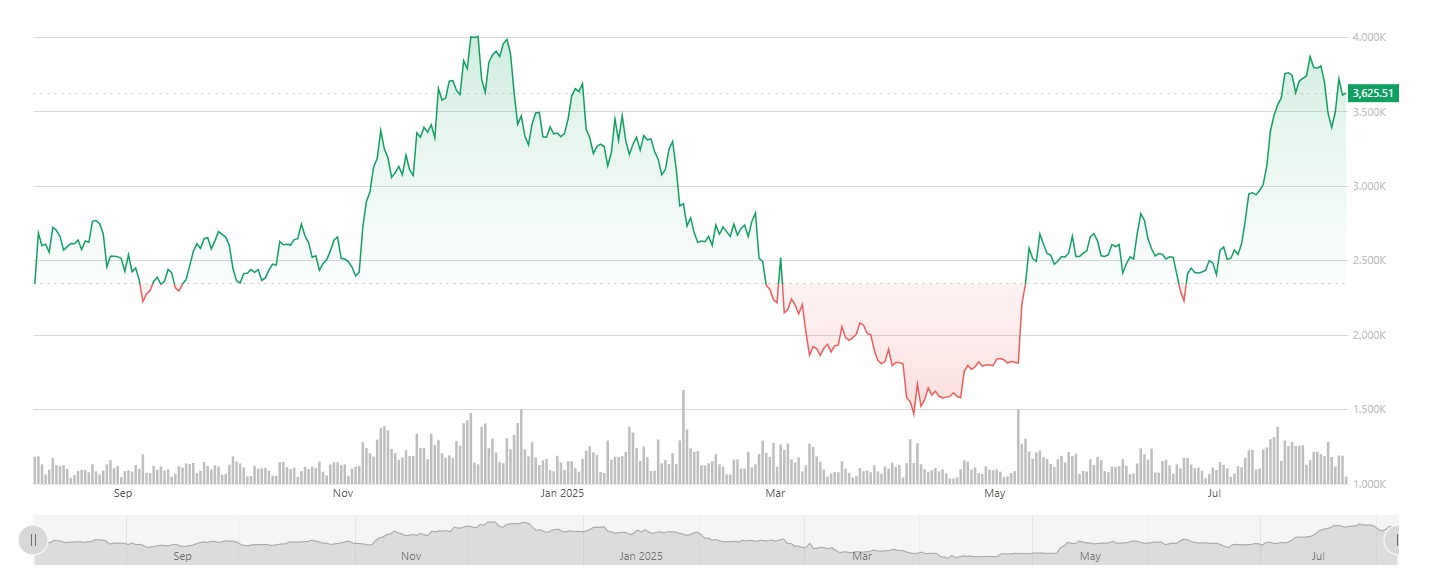From Gold to Oil: Why Ether Appeals to Small-Cap Firms

By the end of July, corporate treasuries held at least 966,304 ether (ETH) tokens on their balance sheets, with a total value of nearly $3.5 billion. For comparison, companies held just 116,000 ETH at the end of 2024—representing more than a ninefold increase.
The reason many companies, particularly small-cap firms, are choosing ether—the second-largest cryptocurrency—over Bitcoin is quite simple. Ether can be staked, while Bitcoin holders depend solely on price appreciation.
Staking allows blockchain networks such as Ethereum to validate transactions in exchange for rewards. [1] It works similarly to crypto mining in terms of how transactions are validated. The usual staking yield varies between 3 and 4 percent.
Better than oil?
“Holding ether is more like owning oil, whereas bitcoin is more one-dimensional, like gold. Ether is the foundation of decentralized finance, not just a pure store of value,” said Anthony Georgiades, general partner at VC firm Innovating Capital, to Reuters. [2]
Ether fuels the Ethereum blockchain, which underpins a wide range of decentralized applications, including lending platforms, trading protocols, and stablecoins. This makes ether a core component of the crypto financial system. In short, holding ETH may make sense even when prices are not rising, thanks to its underlying utility.
However, despite these advantages, ether remains a cryptocurrency—and therefore a high-risk asset.
BITmarkets advises that crypto should represent only a fraction of an investor’s portfolio. As shown in our latest research, crypto assets have exhibited tech-stock-like behavior this year, highlighting volatility as a continued concern.
A volatile first half of 2025
Ether experienced a challenging start to the year. After peaking near $4,000 at the end of 2024, ETH lost nearly two-thirds of its market value by early April 2025. However, it has since rebounded sharply and is now trading slightly above $3,500. [3]

Ether (ETH) Price Activity, September 2024 – August 2025 [3]
As of August 2025, ether’s market capitalization stands at over $430 billion. Bitcoin remains the dominant cryptocurrency, with a market cap of $2.26 trillion, while the third-largest crypto, XRP, is valued at $175.5 billion. [4]
[1] https://www.fidelity.com/learning-center/trading-investing/crypto/crypto-staking